Real Number
Published: 5 Aug 2023
Real numbers are the building blocks of mathematics, forming an essential foundation for countless mathematical concepts and applications. From the simplest counting to the most complex scientific calculations, real numbers play a vital role in quantifying, measuring, and understanding the world around us.
This article is about the world of real numbers, exploring their properties, classifications, and significance in mathematics.
Before starting Real Number, there are some basic terminologies which are:
Natural Numbers
The Set of Natural Numbers is given by:
$ N=\{1,2,3,4, \ldots \} $
Whole Numbers
The Set of Whole Numbers is given by:
$ W=\{ 0,1,2,3,4, \ldots \} $
Integers
The Set of Integers is given by:
$ Z=\{0, \pm 1, \pm 2, \pm 3, \pm 4, \ldots \} $
OR
$ Z =\{ \ldots,-4,-3,-2,-1,0,1,2,3,4, \ldots \} $
Decimal Numbers
There are two types of Decimal Numbers.
Terminating Decimal Numbers:
A decimal number that contains a finite number of digits after the decimal point.
Examples:
$ 5.6, 0.5, 19.356 $
Non-Terminating Decimal Numbers:
A decimal number that has no end after the decimal point.
Examples:
$ 0.35679 \ldots, 23.33333 \ldots , 0.636363 \ldots $
Non-Terminating Repeating Decimal Numbers:
In non-terminating decimal Numbers, some digits are repeated in same order after decimal point.
Repeating decimals are called recurring decimals.
Examples:
$ 23.33333 … , 0.636363 \ldots $
Non-Terminating Non Repeating Decimal Numbers:
In non-terminating decimal Numbers, the digits are not repeated in same order after decimal point.
Non-repeating decimals are called non-recurring decimals.
Examples:
$ 0.35679 \ldots, 5.34543 \ldots $
Rational Number
The word Rational means “Ratio”. A rational number is a number that can be expressed in the form of $ \frac{p}{q} $ where $ p \ and \ q $ are integers $ \ \& \ q \neq 0 $.
Rational numbers are denoted by $ Q $
Set of Rational Number
The Set of Rational Numbers is given by:
$ Q= \{ \frac{p}{q} | p,q \in Z,q \neq0 \} $
Note:
- Every Natural, Whole and Integer Numbers are rational numbers with a denominator of 1 .
- All terminating decimals are rational numbers.
- Non-terminating recurring (repeating) decimals are rational numbers.
Examples:
$ \frac{-2}{5}, \frac{6}{11}, \frac{1}{3}, \frac{-44}{11}, \frac{20}{3} $
$ 23.33333 \ldots, 0.636363 \ldots,-5, 7 $
Irrational Numbers
The word Irrational means “Not Ratio”. The irrational number consists of all those numbers which are not rational. Irrational numbers are denoted by $ Q^/ $.
Examples:
$ \sqrt{2}=1.41421356 \ldots $
$ \pi=\frac{22}{7}=3.1415926 \ldots $
$ 3.56884486 \ldots $
Definition of Real Number
The set of rational and irrational numbers is called Real Numbers. A real number is denoted by $ R $. Thus $ QUQ^/=R $
Examples:
$ \frac{-2}{5}, \frac{6}{11}, \frac{1}{3}, \frac{-44}{11}, \frac{20}{3} $
$ 23.33333 \ldots, 0.636363 \ldots,-5,7 $
$ \sqrt{2}=1.41421356 \ldots $
$ \pi=\frac{22}{7}=3.1415926 \ldots $
$ 3.56884486 \ldots $
Note:
All the numbers on the number line are real numbers.
Real Number MCQs
Enhance your knowledge of real numbers through our comprehensive Multiple-Choice Questions (MCQs). Test your understanding of rational, irrational, and complex real numbers and explore their fundamental properties through interactive MCQs. Get immediate feedback, analyze your answers, and expand your knowledge with a diverse range of real number MCQs.
Real number MCQs offer an engaging and efficient means of exploring the vast world of real numbers. These MCQs are designed to challenge and engage learners of all levels. So, let the journey of exploration and discovery through real number MCQs begin!
O Rational
O Irrational
O Imaginary
O None of these
Show Answer
Rational
Explanation:
Definition of rational number.
2. A rational in the form of $ \frac{p}{q} where \ p \ and q $ are _______
O Imaginary
O Complex
O Integers
O All of them
Show Answer
Integers
Explanation:
3. A rational in the form of $ \frac{p}{q} $ where q _______ 0.
O Equal
O Not equal
O Both a and b
O None of these
Show Answer
Not equal
Explanation:
if $ q=0 $ then it becomes infinite.
4. The word Rational is derived from _______
O Ratio
O Not Ratio
O lota
O All of them
Show Answer
Ratio
Explanation:
5. The rules of rational number for $ p \ and \ q $ are _______.
O $ \frac{p}{q} $
O Integers
O $ q \neq 0 $
O All of them
Show Answer
All of them
Explanation:
These all are the rules for ratinal number.
6. Rational number is denoted by _______.
O $ Q $
O $ Q^{\prime} $
O Both a and b
O None of these
Show Answer
$ Q $
Explanation:
7. Irrational number is denoted by _______
O $ Q $
O $ Q^{\prime} $
O Both a and b
O None of these
Show Answer
$ Q^{\prime} $
Explanation:
8. The word irrational means_______
O Ratio
O Not Ratio
O lota
O None of these
Show Answer
Not ratio
Explanation:
9. Irrational numbers consist of all the numbers which are_______
O Rational
O Not rational
O lota
O None of these
Show Answer
Not rational
Explanation:
Numbers other than rational numbers are called Irrational numbers.
10. $ 1\frac{3}{4} $ is_______
O Rational
O Irrational
O Complex
O None of these
Show Answer
Rational
Explanation:
$ 1\frac{3}{4}=\frac{7}{4}=1.75 $
Terminating decimals are Rational numbers.
11. $ \sqrt{3} $ is_______
O Rational
O Irrational
O Complex
O None of these
Show Answer
Irrational
Explanation:
$ \sqrt{3}=1.7320508076 \dots $
Non-terminating and non-recurring (repeating) decimals are irrational numbers.
12. $ \pi $ is_______
O Rational
O Irrational
O Complex
O None of these
Show Answer
Irrational
Explanation:
The approximate value of $ \pi \ is \ 3.1415926 \dots $ which is Non-terminating and non-recuring decimal. Thus $ \pi $ is an irrational number.
13. $ R $ is the symbol of _______ number.
O Rational
O Irrational
O Real
O Both a & b
Show Answer
Real
Explanation:
14. The union of rational and irrational numbers is the set of _______ numbers.
O Complex
O lota
O Prime
O Real
Show Answer
Real
Explanation:
Rational and irrational numbers are collectively called real number.
15. $ Q \cup Q^{\prime}= $ _______
O i
O Prime
O R
O N
Show Answer
R
Explanation:
The union of rational and irrational numbers is the set of Real numbers.
16. All the numbers on the number line are _______ numbers.
O i
O Complex
O Real
O None of these
Show Answer
Real
Explanation:
Every number there is a point on the line. The number associated with a point is called the coordinate of that point on the line and the point is called the graph of the number.
17. All the numbers on the number line are _______ numbers.
O Rational
O Irrationa|
O Real
O All of them
Show Answer
All of them
Explanation:
Rational, Irrational and Real all are shown by number line.
18. $ -17 $ is _______ numbers.
O Whole
O Natural
O Integers
O All of them
Show Answer
Integers
Explanation:
Natural and whole number is always be positive.
19. A whole number is a number that does not contain_______
O Decimal
O Negative
O Fraction
O All of them
Show Answer
All of them
Explanation:
Whole number does not contain Decimal, Negative and Fraction.
20. All terminating and repeating decimals are_______
O Rational
O Irrational
O Complex
O All of them
Show Answer
Rational
Explanation:
This is the rule for rational number.
21. _______ decimals are Rational numbers.
O Terminating
O Repeating
O Both a & b
O None of these
Show Answer
Both a & b
Explanation:
Terminating and repeating decimals are rational numbers.
22. $ \frac{3}{8}=0.375 $ is _______ decimal.
O Terminating
O Repeating
O Both a & b
O None of these
Show Answer
Terminating
Explanation:
A decimal number that contains a finit number of digits after the decimal point is called terminting decimal.
23. $ \frac{2}{15}=0.133 \ldots $ is _______ decimal
O Terminating
O Repeating
O Both a & b
O None of these
Show Answer
Repeating
Explanation:
When some digits are repeated in same order after decimal point is called repeating decimal.
24. $ 0.1 \overline{3} $ is _______ decimal
O Terminating
O Repeating
O Both a & b
O None of these
Show Answer
Repeating
Explanation:
The bar over the digit 3 means that this digit repeat forever.
25. Bar over the digit means that this digit is_______
O Terminated
O Repeated
O Both a & b
O None of these
Show Answer
Repeated
Explanation:
The bar over the digit means that this digit repeat forever.
26. A decimal which is non-terminating and non-repeating is called _______ numbers.
O Rational
O Irrational
O Complex
O All of them
Show Answer
Irrational
Explanation:
Non-terminating and non-recurring (repeating) decimals are irrational numbers.
27. The number line help in visualizing the set of _______ numbers.
O Complex
O Imaginary
O Real
O None of these
Show Answer
Real
Explanation:
We assume that for any point on a line there is a real number.
28. For every real number there is a _______ on the line.
O Point
O Line
O Both a & b
O None of these
Show Answer
Point
Explanation:
For every real number, there must be a point on the line.
29. The number associated with a point on the line is called the of _______ that point.
O Coordinate
O Zero
O Both a & b
O None of these
Show Answer
Coordinate
Explanation:
It is the graphical representation of real number on line.
30. The point on the number line is called the _______ of the number.
O Coordinate
O Zero
O Graph
O None of these
Show Answer
Graph
Explanation:
31. The numbers to the right of “0” on a number line are called _______ numbers.
O Positive
O Negative
O Complex
O None of these
Show Answer
Positve
Explanation:
The numbers greater than “0” are written on the right side of zero.
32. The numbers to the left of “O” on a number line are called _______ numbers.
O Positive
O Negative
O Complex
O None of these
Show Answer
Negative
Explanation:
The numbers less than “0” are written on the left side of zero.
33. 0 is _______
O Positive integers
O Negative integers
O Neither positive nor negative
O Not an integer
Show Answer
Neither positive nor negative
Explanation:
0 is the only number which is neither positive nor negative.
34. Repeating decimals are called _______ decimals.
O Recurring
O Non-Recurring
O Both a & b
O None of these
Show Answer
Recurring
Explanation:
Repeating decimals are also called Recurring decimals.
35. Non-Repeating decimals are called _______ decimals.
O Recurring
O Non-Recurring
O Botha \& b
O None of these
Show Answer
Non-Recurring
Explanation:
The Non-Repeating decimals are also called Non-Recurring
36. $ \frac{5}{27}=0.185185185 \dots $ is called _______ recurring decimals.
O Terminating
O Non-Terminating
O Both a & b
O None of these
Show Answer
Non-Terminating
Explanation:
Here the number of digits repeated infinitely.
37. $ \frac{5}{7} $ is _______ number.
O Rational
O Irrational
O Imaginary
O None of these
Show Answer
Rational
Explanation:
$ \frac{5}{7}=0.714285714285 \dots $
Non-terminating recurring (repeating) decimals are rational numbers.
38. $ \sqrt{36} $ is _______ .
O Rational
O Whole
O Natural
O All of them
Show Answer
All of them
Explanation:
$ \sqrt{36}=6 $
Thus 6 shows Natural, Whole and Rational number at a time.
39. $ \frac{14}{3} $ is _______ number.
O Rational
O Whole
O Both a & b
O Irrational
Show Answer
Rational
Explanation:
$ \frac{14}{3}=4.66666 \dots $
Non-terminating recurring (repeating) decimals are rational numbers.
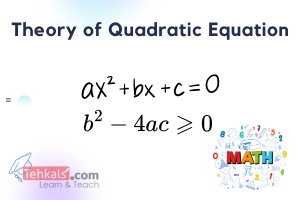
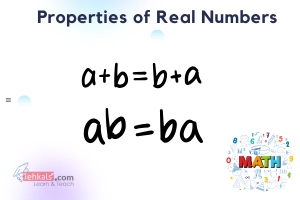
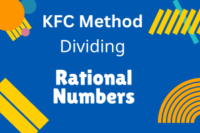
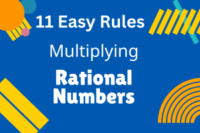
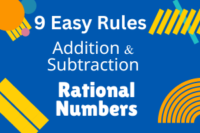

,😊.....